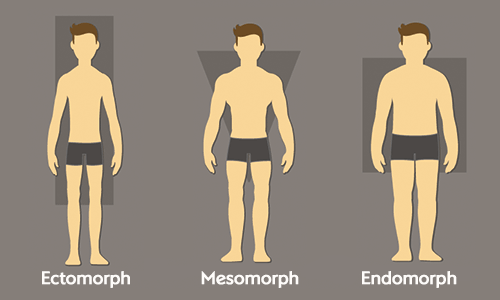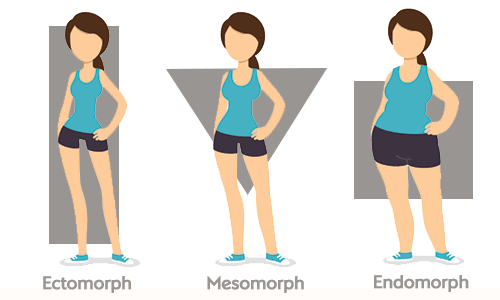How to train for your body type
- Overview
- Full article
- Related articles
There are no two bodies in the entire world that are identical, but there are categories of body type that we all fit into. Until recently it was assumed that no matter what body type you have, the same types of exercise would have the same results. But recent extensive research has identified that your body shape can determine the success, or failure, of different types of exercise.
Three main body types have been identified:
Ectomorphs
Ectomorphs are typically tall, skinny types who have small frames and don’t gain weight easily. It's often assumed that slim means healthy, but this is not necessarily the case.
Slim people may not have the obvious clinical hallmarks of poor health, such as weight gain or excessive stomach fat, but damage on a cellular level still occurs in slim people. In particular, damage to the heart and arteries can still be inflicted by processed foods, smoking, alcohol, pollution and excessive stress. So, it's important that ectomorphs still perform regular aerobic or cardiovascular exercise because this increases the number of antioxidants the body is able to produce long term that protects the body from these damaging free radicals.
Ectomorphs should also incorporate exercise which includes resistance training in order to maintain a health BMI. Try a circuit class or shorter HIIT workout which will engage your muscles. If you are regularly going to the gym to do resistance workouts, then substitute isolation moves for compound moves which activate larger muscle groups.
Best exercises: Cardio, resistance training, isolation and compound moves
Mesomorphs
Mesomorphs are typically the more athletic types who have an inverted triangular shaped body. Mesomorphs have high metabolisms and cells which are more responsive to building muscles, but they also are prone to gain fat quickly, so should watch their calorie intake. In particular mesomorphs should focus on total energy intake based upon the duration and intensity of exercise.
“Mesomorphs should combine or alternate weight training and cardiovascular exercise to improve their cardiovascular endurance and burn fat.”
Running, swimming, rowing or cycling alternated with moderately heavy weights and a moderated calorie intake should keep a mesomorph fit and healthy.
Best exercises: Mixed weights and cardio
Endomorphs
Endomorphs are typically ‘short and stocky’. They store fat easily and tend to be wider and rounder, especially in the middle. With a slower metabolism they find it easy to store fat but are also able to gain muscle easily.
Although very little weight-based exercise is needed to build muscle endomorphs need to be very strict about what they eat. This includes not only total energy intake, but also carbohydrate intake and the glycaemic index (GI) of foods. Endomorphs will respond well to controlled or lower carbohydrate diets, sourced from low sugar sources.
As it’s harder for this body type to lose fat, cardiovascular exercise is essential as well as weight training.
If you want to burn calories faster I’d suggest trying High Intensity Interval Training which will burn calories but still work your muscles.
Best exercises: High intensity (HIIT) training
Which body type are you?
Although you may not feel that you fit naturally into one of these single body types, the way in which you store fat, build muscle and burn energy will help identify which one is correct. These factors can’t be changed naturally as they are predetermined by your genes passed down through your family.
To find out more about your body type or what exercise is best for you, book a Health MOT with one of our Wellbeing Advisors who will be able to help create an exercise plan for your fitness goals.
Last updated Monday 11 April 2016
First published on Monday 14 December 2015



